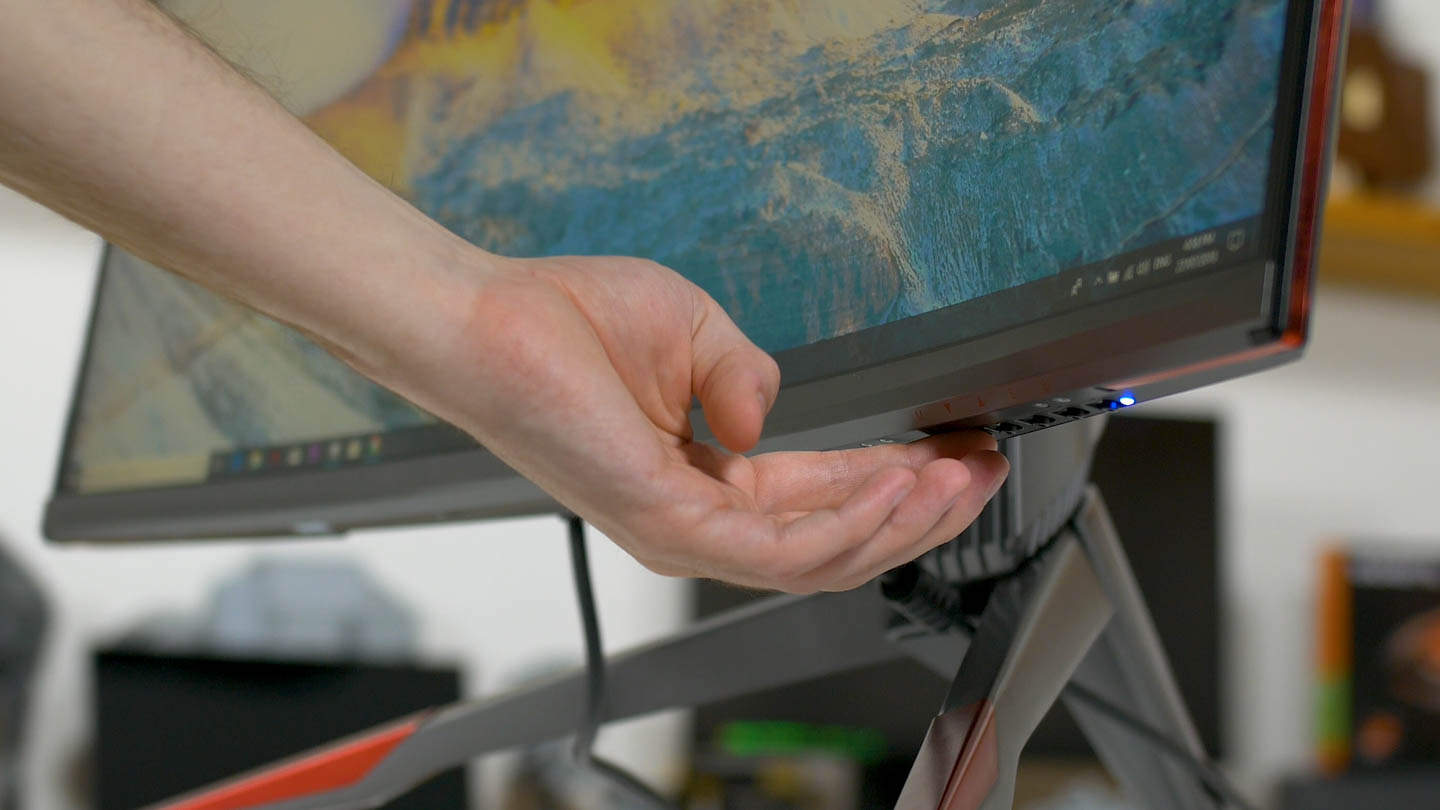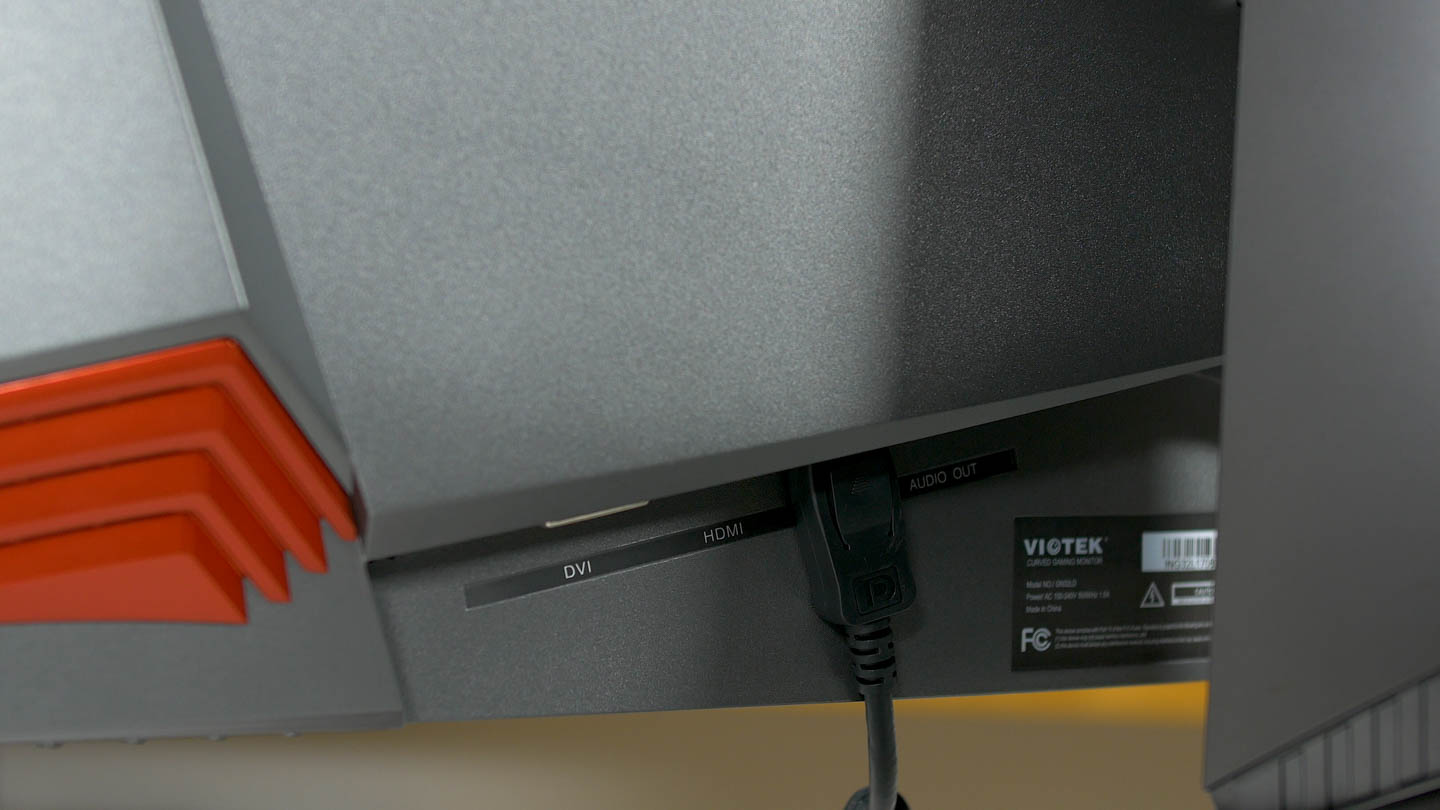Tested: One of the Best-Selling (No Brand) Gaming Monitors on Amazon - jeffreycomman99
Today we're superficial at a monitor from a brand we've never used before, merely one that gets heavily requested: Viotek. They're popular on Amazon and draw some of the cheapest gaming monitors you can suffer, so we're interested to discove how they stack up and whether it's worth purchasing this sort of monitor over a improve known brand option.
The ride herd on we have got to review today is the Viotek GN32LD. This FreeSync reveal is 31.5-inches in size, and packs a sinuous 1440p VA Liquid crystal display that super prohibited at a 144 Hz refresh rate. It's priced at $470 through Amazon, which is approximately the mark of another budget brands like Pixio and MSI that have monitors based on the same panel, but it's a lot cheaper than the Asus ROG Strix XG32VQ or Samsung C32HG70 for example.

When testing out budget-directed monitors we'Re always untrusting of a a couple of things: is the build up timber any well, and is the display nonfunctional in any way? To address that secondly point first, our retail monitor shipped with no issues any, so nobelium dead pixels, and Viotek offers a congested substitute if your monitor arrives with a dead pixel indeed it's non something to be too implicated some.
Arsenic for build quality, the GN32LD is exquisitely. It's non particularly surprising, and I certainly wouldn't class it as a gamy-end construction, simply it's fine for a gaming monitor. The foundation of the three-pronged stand is metal-looking, but otherwise the stand's pillar and the rest of the monitor use grey-ish plastic with a fewer red highlights. The shaping used on the pillar feels particularly dirt cheap As IT uses a rattling basic finish up, though it's a number finer on the rear of the display itself.

General, Viotek is using a gamer design which I tend not to prefer, there's a lot of strange angles and vents that it probably could have done without. There's also two RGB LED strips happening the rear which add nothing to the design, I think you'rhenium not even able to see them during standard operation and their RGB support is basic. Plus the RGB clashes with the red highlights so overall information technology's a minute of a eerie choice.
The stand is robust and does accompaniment both height and tilt adjustment, although its meridian adjust is quite limited. There's no swivel supportn – not that swivelling is that important – and there's also no cable management hole, which again is a scra of a nit pick.

My biggest issue with the design is the OSD controls. Viotek have gone with quartet buttons on the posterior edge of the panel, which makes navigating through the OSD a pain compared to a directive toggle. All monitors should use guiding toggles with menus of this complexity, nary exceptions.
However the OSD itself includes a lot of features you'd also find on monitors from other brands, sol you're not missing out on much passing with the cheaper Viotek alternative. The OSD includes things like a low blue light mode, crosshairs for cheating, a extremely resolution feature, and even picture in image, on with the customary image quality controls.

The array of inputs on the GN32LD is basic: DVI, HDMI and DisplayPort, plus an audio output sea do. The monitor supports FreeSync with low framerate compensation, soh you puzzle over the adaptive sync crosswise the smooth refresh range up to 144 Cps. And I still think the combination of resolution and refresh rate the GN32LD provides – it's a 2560 x 1440 reminder after all – is perfect for most gamers with sensibly high-end hardware, it gives a great mix of smoothness and clarity.
The Samsung VA control panel used features a 1800R curve, I'm more a flat panel kind of guy with 16:9 monitors but at 32-inches in size the curve isn't that bad. Plus right now there aren't many options for monitors of this sized and specs that aren't curved, so you're bad much cragfast with it anyway.

Let's talk a bit more about the panel and see how our test information matches high to Viotek's claims. For cleverness, they listing 280 nits of typical brightness and I measured a height of 365 nits, which is going to be too bright for most desktop users. The contrast ratio waterfall a little short of Viotek's claims though, at a trace under 2500:1 compared to its rated "3000:1" value, although as this is a VA panel we're still getting that nice high contrast ratio. IT's also good to see this dividing line ratio held end-to-end the brightness range.


New to our test entourage is latent period examination, one of the most hard requested prosody. We've bought some of the fastest tools available to test response time and gone about testing some of the monitors we had available, and over time as we make more monitor reviews we'll get a larger set of information for some cloying comparisons. Just the good news is we can at once provide this describe metric that tells USA a portion some smearing, ghosting and how suitable this monitor is for play.
So, Viotek claims a 3ms grey-to-grey reaction time using overuse, but in my testing victimization the "high" reaction time place setting – the highest setting acquirable and the optimal setting for this monitor – I recorded just an 8.2ms average intermediate-to-grey response, which is quite slow but within a normal range for VA panels. American Samoa we know, VA is one of the slower LCD technologies and that's on show in this result.


It power also be useful to be intimate that on average, rise times were significantly longer than fall times, almost double crossways our test points, and middle-hoar transitions (for example, 20% white to 80% gabardine) are in particular sluggish. I also recorded a 15.1ms black-Andrew D. White-black changeover time, which shows you the time required to make the largest luminance transition, in case you were wondering.
The important thing to note here is that both the average grey-to-greyness answer and rising slope times in general in reality took longer than the refresh window. This is a 144 Hz monitor, so the cast is updated every 6.94ms, except this panel only transitions in, happening middling, 8.2ms. This means that in some cases you might not be getting a honorable 144 Hz refresh because the crystals themselves simply can't transition fast enough to show a completely newborn image at that rate. While you father't get some noticeable overshoot, smearing and ghosting are concerns due to the long response time.
However this isn't an issue with this Viotek monitor specifically, rather every monitors that use the same Samsung VA panel will have reply multiplication roughly tantamount to what I've shown here. So don't think you're getting a faster display if you grease one's palms the MSI or Asus monitors instead; they still purpose the same panel so they are also pug-faced with the same intrinsical limitations of the Old Dominion technology. Equally for Viotek's 3ms response time claim, non exactly accurate to say the least.
The dependable news is the GN32LD exhibits excellent stimulation lag of just few milliseconds, so while transitions aren't peculiarly fast, the admonisher processes its inputs quickly and gets happening with the job. And yes, we have the ability to test input lag now as well, which we've normalized for the tools we'rhenium victimisation to give an estimate of the display's processing time. And unlike extraordinary lag testing tools out there, our custom solution works at the display's native resolution and freshen rate.
Source: https://www.techspot.com/review/1667-viotek-gaming-monitor/
Posted by: jeffreycomman99.blogspot.com


0 Response to "Tested: One of the Best-Selling (No Brand) Gaming Monitors on Amazon - jeffreycomman99"
Post a Comment